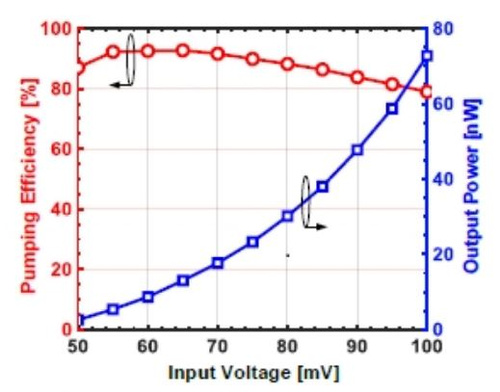An integrated circuit that can cold start a DC-DC boost converter on a very small input voltage
Background
Energy harvested from body heat using thermoelectric generators (TEG) can be used to power wearable electronics, such as wireless sensors. However, owing to the small temperature gradient between the skin surface and ambient air (∼1-2 ◦C) and a low Seebeck coefficient, centimeter-scale TEGs can generate only tens of millivolts of open circuit voltage. A DC-DC converter is needed to boost this voltage to ≥1V for efficient operation of typical load electronics, like a sensor. Typical solutions available in the art have used a battery to overcome the challenge of starting the DC-DC converted on the very low input voltage, which limits the lifespan and application space for such devices. In addition, impedance matching at the input of the converter for maximum power transfer from the TEG further lowers the input voltage of the converter, requiring high efficiency to sustain operation of the converter with low input voltage.
Technology Description
Researchers at OSU have developed an integrated circuit that can cold start a DC-DC boost converter on a very small input voltage and combines a unique charge pump and very efficient DC-DC boost converter to maintain on-going operation at even lower input voltages (Figure 1). This IC is battery-free and can be made with conventional CMOS fabrication methods. This device can power many small sensors that can, for example, enable health monitoring with wearable electronics or provide sensing capability wherever there is low-grade heat or a small temperature gradient available.

Figure 1: Measured pumping efficiency and output voltage over a range of input voltages.
Features & Benefits
- No batteries
- Highly efficient
- Standard CMOS manufacturing
Applications
- Wearable electronics
- Energy scavenging of low grade heat
- Remote sensing
Status
Patented: US 11,070,129 B2, US 11,349,482 B2